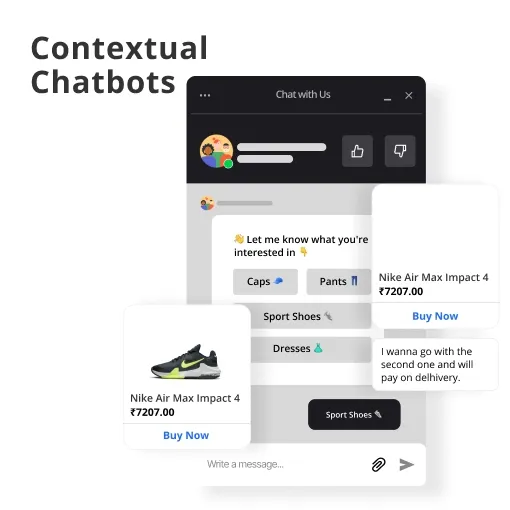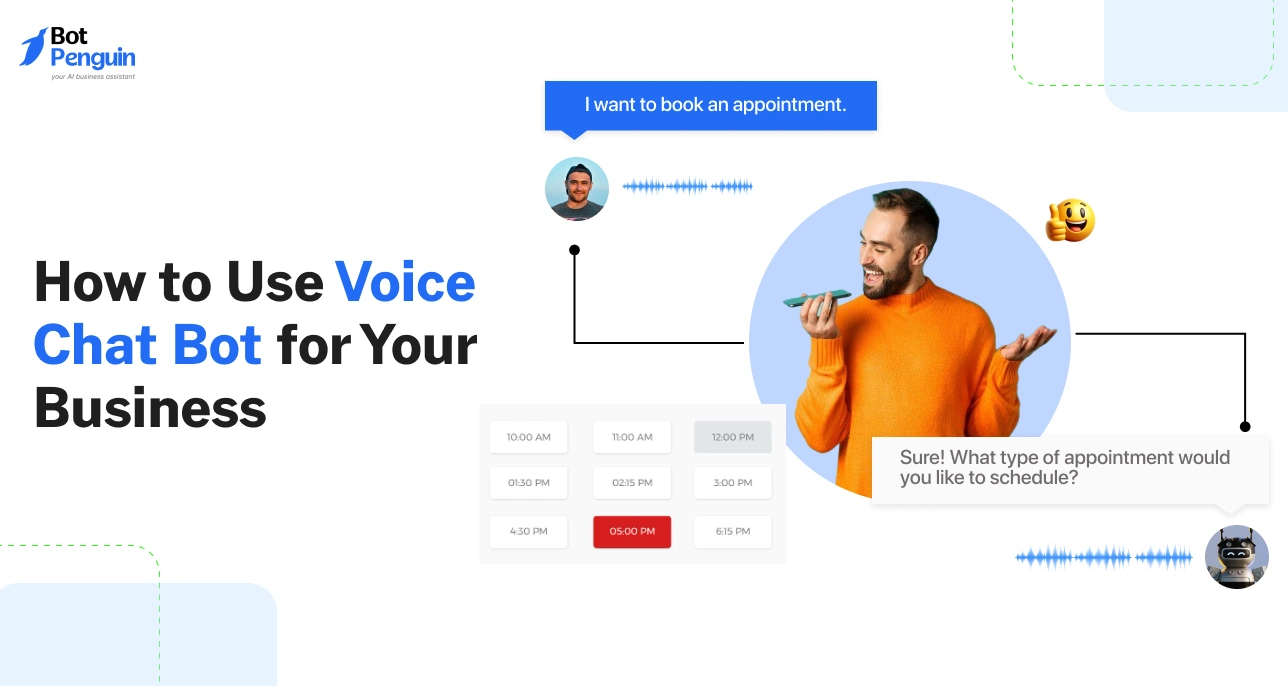What are Contextual Chatbots?
Contextual Chatbots are virtual assistants that are programmed to engage in human-like conversations with users, with the aim of providing personalized and efficient assistance.
Unlike traditional chatbots, which use pre-set responses to answer user queries, Contextual Chatbots use NLP and ML to understand the context of a conversation and respond accordingly.
They can handle complex queries, learn from user interactions, and provide a more human-like and personalized experience.
How do Contextual Chatbots work?
Contextual Chatbots work by analyzing user input, interpreting the context, and providing relevant responses. They use NLP to understand the meaning behind user queries and ML to learn from user interactions and improve their responses over time.
Contextual Chatbots can be built using a variety of programming languages and tools, such as Python, Dialogflow, and Microsoft Bot Framework. The process of creating a Contextual Chatbot involves defining the use case, designing the conversation flow, training the model, and integrating the chatbot into the desired platform.
When to use Contextual Chatbots?
Contextual Chatbots are useful in a wide range of scenarios, including customer support, e-commerce, healthcare, and education.
They can provide 24/7 assistance, handle large volumes of queries, reduce response times, and improve customer satisfaction. Some examples of when to use Contextual Chatbots include:
- Providing customer support and resolving issues
- Handling online orders and transactions
- Assisting patients with medical queries and appointments
- Answering students' questions and providing learning resources
Where are Contextual Chatbots used?
Contextual Chatbots are used in various industries and sectors, including finance, healthcare, e-commerce, and education. They can be integrated into websites, mobile apps, messaging platforms, and voice assistants. Some examples of where Contextual Chatbots are used include:
- Banking and financial services: providing assistance with account management, transactions, and investments.
- Healthcare: assisting patients with medical queries, appointments, and prescriptions.
- E-commerce: handling online orders, providing product recommendations, and offering customer support.
- Education: answering students' questions, providing learning resources, and assisting with admissions.
Who benefits from Contextual Chatbots?
Contextual Chatbots benefit both businesses and users. Businesses can improve their customer service, reduce operational costs, and increase revenue by using Contextual Chatbots. Users can enjoy personalized and efficient assistance, 24/7 availability, and a seamless online experience. Some examples of who benefits from Contextual Chatbots include:
- Business owners and managers: can improve customer service, reduce costs, and increase revenue.
- Customers and users: can get personalized and efficient assistance, anytime and anywhere.
- Patients and healthcare providers: can streamline medical queries and appointments, and improve healthcare outcomes.
- Students and educators: can enhance learning outcomes and facilitate educational processes.
How do they differ from traditional chatbots?
Traditional chatbots are rule-based, meaning that they follow a pre-defined script or set of rules to respond to user input. They typically can't understand the context of a conversation or provide personalized responses.
In contrast, Contextual Chatbots use AI and NLP to analyze user input and provide relevant, personalized responses. They can understand the intent behind a user's message, draw on previous interactions, and adapt to changing contexts.
How contextual chatbots enhance the user experience?
Contextual Chatbots use context to provide more personalized and relevant responses to users. They can understand the intent behind a user's message, draw on previous conversations, and adapt to changing contexts. This means that they can provide more accurate and helpful information, and create a more engaging user experience.
Examples of Contextual Chatbots in action:
1. Bank of America's Erica
Erica is a Contextual Chatbot used by Bank of America to provide banking and financial advice to customers. Erica can analyze users' financial information, understand their goals and priorities, and provide personalized advice and recommendations.
For example, if a customer asks Erica how they can save money on their monthly expenses, Erica can analyze their spending habits and offer tailored suggestions.
2. Duolingo's chatbots
Duolingo is a language learning app that uses Contextual Chatbots to provide conversational practice for learners. These chatbots can understand the user's level of proficiency, identify areas where they need to improve, and provide relevant practice exercises.
For example, if a user struggles with a particular grammar concept, the chatbot can provide additional practice exercises to help them master the concept.
3. H&M's Kik chatbot
H&M's Kik chatbot is a Contextual Chatbot that helps users find fashion inspiration and make purchase decisions. The chatbot can understand a user's fashion preferences and suggest outfits and items that match their style.
It can also provide personalized recommendations based on previous purchases and browsing history.
Best Practices for Contextual Chatbots
1. Designing a user-friendly chatbot interface
The design of the chatbot interface plays a crucial role in the user experience. A well-designed interface should be intuitive, easy to navigate, and provide clear instructions to users.
It's important to consider the target audience and ensure that the interface is accessible and user-friendly for all users.
2. Personalizing the user experience
Personalization is key to providing a relevant and engaging user experience. Contextual Chatbots can use data such as user history, preferences, and behavior to provide personalized responses and recommendations.
This can help to build trust and loyalty with users, and improve their overall satisfaction with the chatbot.
3. Training the chatbot with relevant data
A Contextual Chatbot is only as good as the data it is trained on. It's important to provide the chatbot with relevant data and to continuously monitor and update the training data as needed.
This can help to ensure that the chatbot is providing accurate and helpful responses to users.
4. Continuous improvement and optimization
Contextual Chatbots require ongoing monitoring and optimization to ensure that they are providing the best possible user experience.
It's important to track key metrics such as user engagement, satisfaction, and conversion rates, and to use this data to make informed decisions about how to improve and optimize the chatbot over time.
Frequently Asked Questions(FAQs)
1. What is the difference between a traditional chatbot and a contextual chatbot?
Traditional chatbots use pre-set responses to answer user queries, while contextual chatbots use NLP and ML to understand the context of a conversation and respond accordingly.
2. How can contextual chatbots improve customer satisfaction?
Contextual chatbots can provide personalized and efficient assistance, reduce response times, and handle large volumes of queries, leading to improved customer satisfaction.
3. What industries can benefit from contextual chatbots?
Contextual chatbots can benefit a wide range of industries, including finance, healthcare, e-commerce, and education.
4. How can I create a contextual chatbot?
You can create a contextual chatbot by defining the use case, designing the conversation flow, training the ML model, and integrating the chatbot into the desired platform.
5. What are some common mistakes to avoid when creating a contextual chatbot?
Some common mistakes to avoid when creating a contextual chatbot include using overly complex language, providing irrelevant or incomplete responses, and neglecting to continuously train and improve the chatbot's ML model.


